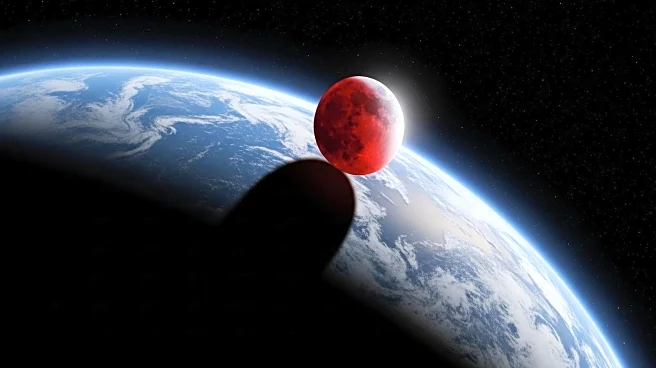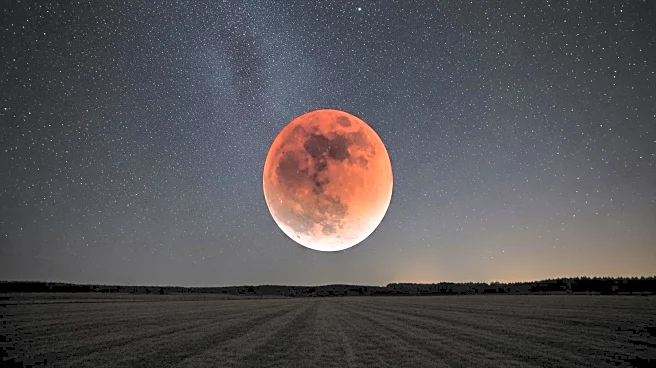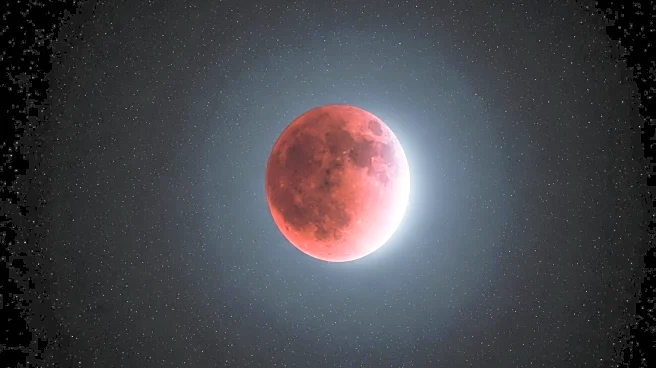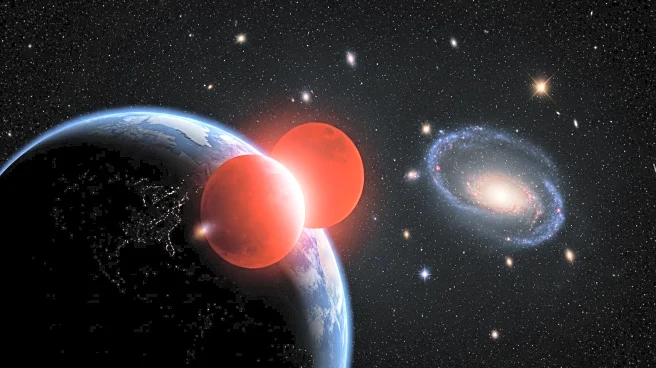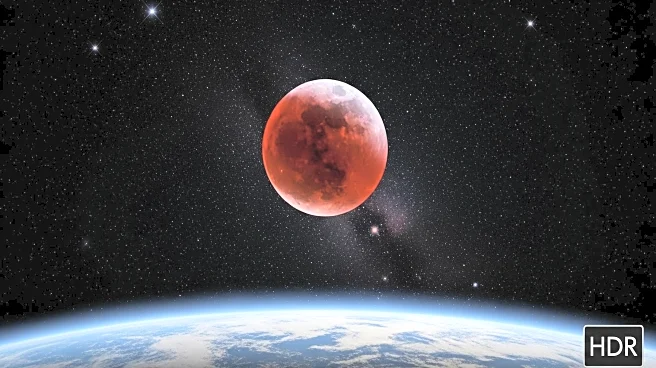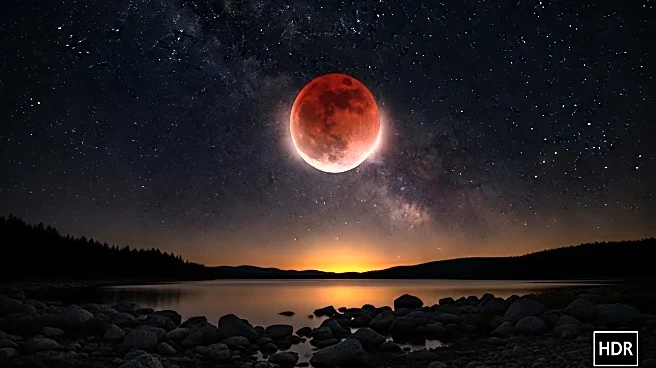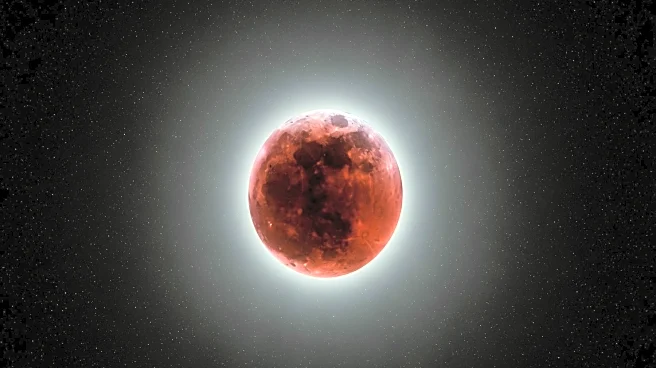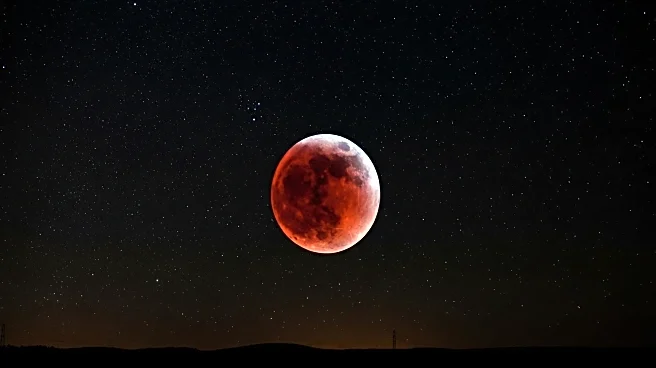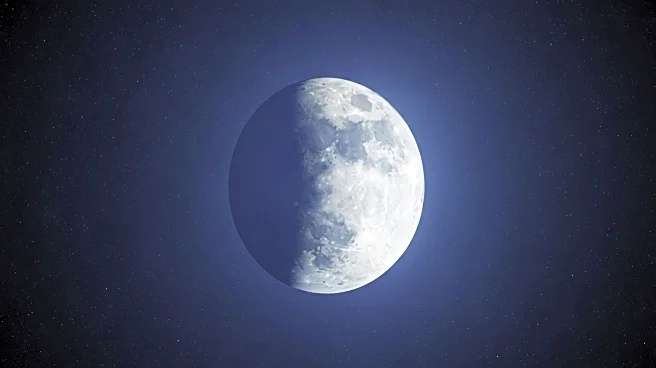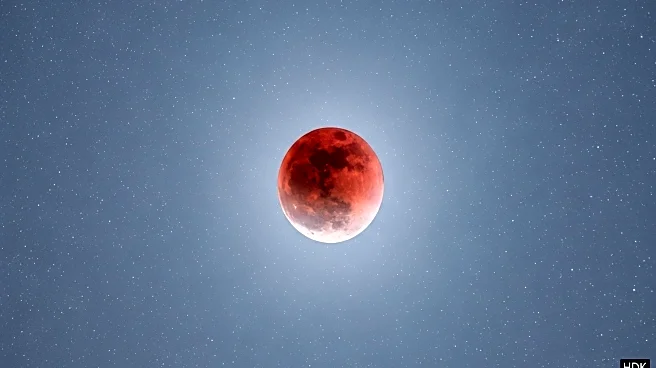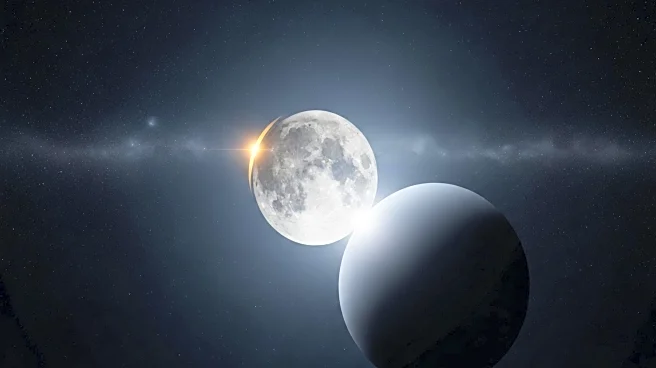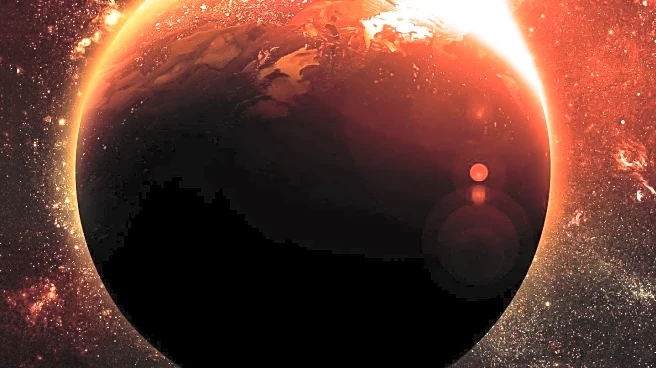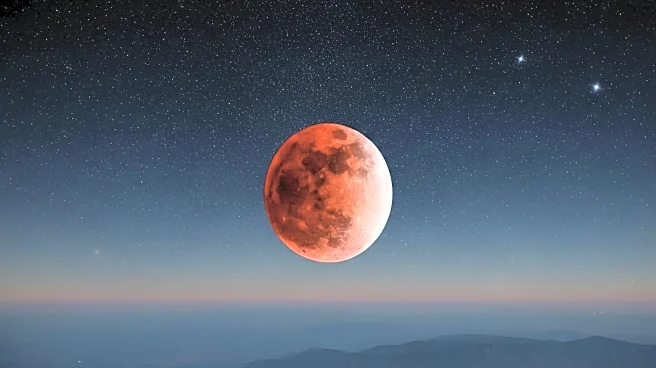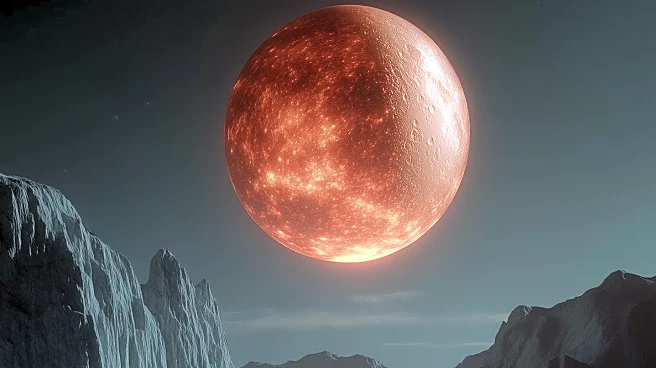What is the story about?
What's Happening?
The lunar eclipse on September 7, 2025, will not be visible in the United States due to its timing during daylight hours. However, the event will be observable in parts of Europe, Africa, Asia, and South America. During the eclipse, Earth will pass directly between the Sun and the Moon, casting a shadow that turns the Moon a striking red color. While U.S. viewers will miss the spectacle, organizations like NASA and the Virtual Telescope Project are expected to livestream the event, allowing global audiences to experience the celestial show.
Why It's Important?
The inability to view the lunar eclipse from the U.S. highlights the geographical limitations of celestial events, emphasizing the importance of global collaboration and technology in sharing such experiences. Livestreaming the eclipse allows a wider audience to participate, fostering interest in astronomy and science. The event serves as a reminder of the interconnectedness of Earth's natural phenomena, promoting scientific literacy and curiosity. Observing the eclipse can inspire educational activities and community engagement, encouraging continued exploration and discovery.
What's Next?
U.S. skywatchers can look forward to the next lunar eclipse visible in 2026, offering another opportunity for observation and learning. Educational institutions and observatories may organize events and workshops to capitalize on public interest, promoting scientific engagement. The widespread visibility of the eclipse encourages collaboration between international organizations, potentially leading to joint initiatives and research projects. The event serves as a reminder of the beauty and complexity of Earth's natural cycles, inspiring continued exploration and discovery.
AI Generated Content
Do you find this article useful?
